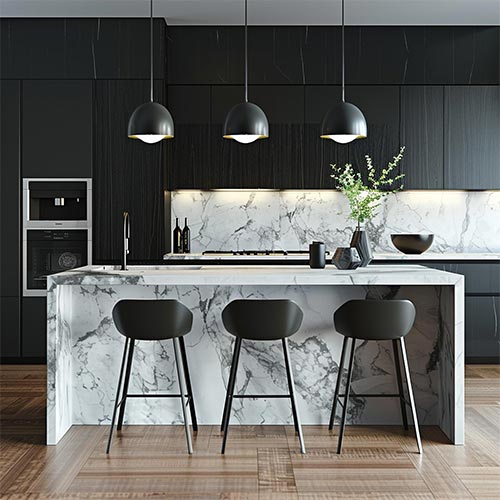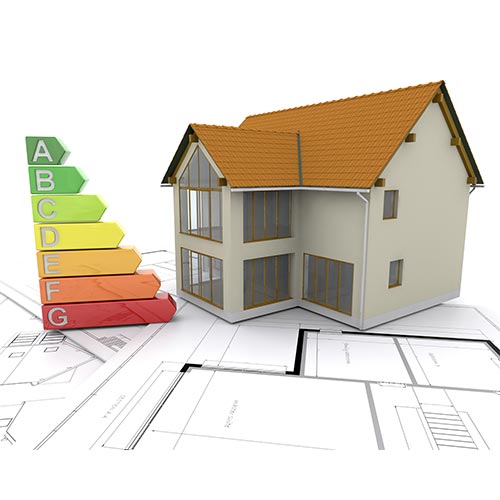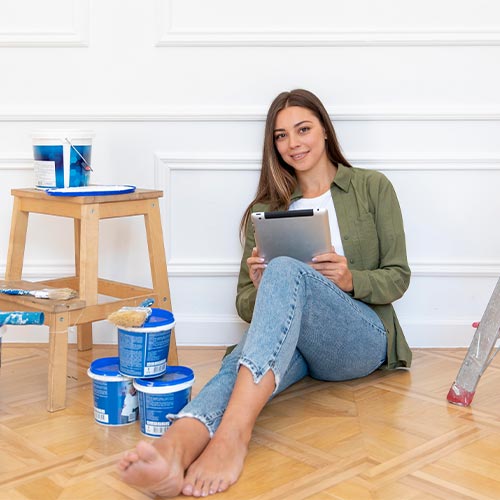What’s Your Interior Design Style: A List Of All the Styles
Have you ever found yourself asking the question what are the different types of interior design styles? Maybe you want to switch up your style but can’t decide which direction to go in. There’s a style for every preference and we’re here to help you find the look that’s right for you
Home Renovation Online estimate
Interior design is more than just furniture and paint—it’s a language. Whether you’re shopping for a sofa or selecting throw pillows, you’re immersed in its vocabulary. Interior design styles are the ABCs of this language, guiding us through trends and self-expression.
Each style offers a unique perspective, reflecting different eras and tastes. Understanding these styles helps us create spaces that truly reflect who we are. Embracing creativity is key the best designs break the rules.
Discovering your interior design style is the first step toward unlocking your space’s potential. Let’s explore together and find your perfect style.

1_ Modern
Modern style, often mistaken for being cold, actually exudes a sophisticated warmth through its minimalist approach. Originating in the 1920s, modern design emphasizes clean lines and essential elements, creating spaces that feel both inviting and elegant.
Contrary to popular belief, modern interiors celebrate simplicity and functionality rather than excess embellishments. Neutral color palettes dominate, with occasional pops of color adding vibrancy.
It’s crucial to distinguish modern from contemporary styles, as they possess distinct characteristics. While both embrace innovation and minimalism, modern design refers specifically to the early 20th-century movement, while contemporary style encompasses current trends.
Understanding the essence of modern style allows for appreciation of its timeless appeal and versatility in contemporary interiors. By embracing clean lines and simplicity, modern design creates visually pleasing, functional spaces with enduring warmth.

2. TRADITIONAL
Traditional style embraces heritage and symmetry, with rich textiles and antique pieces creating a warm and inviting atmosphere. Transitional style blends traditional elements with modern touches for a fresh and relaxed feel, offering versatility and personalization.
Interior designers play a key role in infusing traditional design with modern twists, creating spaces that are both elegant and functional. Whether opting for the timeless charm of traditional design or the blend of tradition and modernity in transitional style, homeowners can create captivating living spaces that reflect their individual tastes and preferences.

3_BOHO
Bohemian style, or Boho, has surged in popularity for its vibrant and eclectic aesthetic. Rooted in natural elements and unconventional living, Boho design embraces vibrant colors, bold patterns, and a layered look. With an emphasis on nature, plants play a central role, infusing life and energy into spaces. Whether maximalist or minimalist, Boho encourages mixing, matching, and exploring to create a comfortable and meaningful atmosphere. Embrace the Bohemian spirit by incorporating organic elements, bright colors, and eclectic accents for a space that feels authentic and welcoming.

4_Coastal
Coastal interior style, also known as coastal decor or coastal chic, brings the relaxed and breezy atmosphere of beachside living into your home. Inspired by the sea and sand, coastal design embraces light and airy color palettes, with shades of blue, white, beige, and soft pastels dominating the space. Natural materials like weathered wood, rattan, and linen are key elements, evoking a sense of coastal charm and tranquility.
Furniture in coastal interiors is comfortable and inviting, often featuring casual elegance. Nautical elements such as ropes, anchors, and seashells are used as decorative accents, adding to the coastal theme. Texture is important, with sisal rugs, woven baskets, and driftwood contributing to the relaxed vibe.
Large windows and open floor plans are common in coastal homes, allowing for plenty of natural light and stunning views of the ocean or coastline. Decor is kept simple and uncluttered to create a serene and peaceful atmosphere reminiscent of beachside living.

Art Deco, the opulent and jewel-toned relative of modern design, stands out as a distinctly luxurious style. Originating in the 1920s, ’30s, and ’40s, this essential design movement is defined by its geometric patterns, symmetrical layouts, bold hues, and metallic accents. While contemporary adaptations may tone down its extravagance, Art Deco retains a retro charm, exuding a playful and visually captivating allure. Considered the flashy precursor to midcentury modern design, Art Deco remains an enduring symbol of glamour and sophistication.

6_ Minimalist
Minimalist design, both celebrated and debated, adheres to the fundamental principle of minimalism: less is more. While its origins trace back to the 1960s art movement, contemporary interpretations of minimalist style emphasize simplicity, neutral tones, and clean lines. Rejecting clutter and unnecessary embellishments, minimalist design prioritizes functionality. Today’s minimalist spaces range from sparse and streamlined to luxurious with a select few items, all while embracing natural light, materials, and an open layout. While often associated with all-white interiors, modern minimalist designs increasingly incorporate touches of color and natural finishes for added warmth and depth.

Farmhouse design has transcended its origins to become a beloved choice for urban, suburban, and rural homes alike, thanks to its timeless charm and inviting ambiance. Often blending warmth, modernity, and vibrant colors, farmhouse style distinguishes itself from rustic design, though it can easily incorporate rustic elements. Evoking a sense of nostalgia, farmhouse interiors typically feature open shelving, exposed beams, varied finishes, natural wood accents, and the quintessential shiplap detailing. Industrial touches, subway tile backsplashes, neutral color palettes, and open layouts are also prevalent in farmhouse design, contributing to its enduring popularity and widespread appeal.

8_ Scandinavian
Scandinavian design shares similarities with minimalist design, but distinguishes itself with its emphasis on plush textures and a commitment to coziness. Decorated spaces often feature layers and abundant natural light. The color palette leans towards monochromatic tones, incorporating shades of black, white, and gray alongside warm wood textures. Furs, both genuine and faux, are frequently used to enhance the Scandinavian ambiance, setting it apart from pure minimalist aesthetics.

9_Eclectic
Eclectic design shares traits with maximalism, favoring mixing, matching, and layering various design elements. However, eclectic spaces often counterbalance their diverse mix of styles with neutral foundations. Imagine a tufted sofa complemented by layered, patterned rugs and a rounded coffee table featuring metallic finishes against a backdrop of white walls. While maximalism embraces an unabashed more-is-more approach, eclectic design celebrates abundance while tempering it with neutral walls or understated flooring, often beneath vibrant rugs.

10_Shabby Chic
Reflects a vintage-inspired style where furniture and furnishings are either chosen for their appearance of age and signs of wear and tear or where new items are distressed to achieve the appearance of an antique.
Before the rise of cottagecore, English cottage design took inspiration from the quaint cottages of rural England. Rustic, snug, and inviting, this style embodies a relaxed and approachable vibe. Typical features include wooden and brick surfaces, soft pastels, abundant greenery, and natural accents. Similar to farmhouse design, exposed beams, unfinished textures, and wall paneling are favored in English cottage style, but with a focus on quaint coziness rather than spacious openness often found in farmhouse-inspired spaces.
Summed up in one word, French country design is charming. Embracing a similar antique-infused ethos as rustic and farmhouse styles, French country spaces exude a faded grandeur and understated elegance reminiscent of a well-preserved countryside chateau. Nature-inspired, timeless hues dominate this style, while furnishings often boast mismatched yet restored pieces brimming with character.

Simpler than modern coastal design, Mediterranean design blends minimalist sensibilities with coastal elements. It’s a bit elusive to define precisely, but unmistakable in appearance: characterized by textured surfaces like plaster walls for a rugged ambiance, along with archways, minimal wall decoration, and abundant natural finishes. If you envision a space nestled on a scenic Mediterranean cliffside, chances are you’re encountering a rendition of Mediterranean design.
14_ Modern Rustic
Brimming with personality, modern rustic décor embraces raw, natural elements to fashion spaces that are minimalistic yet inviting. Distinct from the beloved farmhouse style, modern rustic design blends distressed, textured, reclaimed, or restored surfaces and furnishings with the sleek lines of modern aesthetics. These spaces often feature neutral color schemes, original or exposed architectural elements, and a harmonious interplay between rustic charm and contemporary simplicity.
Log in to Instagram to see more ideas

15_Gothic
Gothic style design originates from the architectural style of the 12th-century Gothic period, characterized by its verticality, pointed arches, and ornate detailing. Key features include high ceilings, stained glass windows, and elaborate stonework. Modern Gothic design adapts these elements through a dark color palette, rich materials like velvet and wrought iron, and dramatic decorative accents. This style is known for its grand, awe-inspiring aesthetic that combines historical grandeur with a sense of spiritual elevation.





